Key takeaways:
- Typography creates emotional connections and shapes reader perceptions, influencing the narrative experience.
- Choosing the right typeface considers factors like target audience, medium, and brand identity to enhance engagement and clarity.
- Common mistakes include overusing fonts, neglecting hierarchy, and poor color choices that hinder readability.
- Effective typography involves limiting font choices, ensuring consistent spacing, and adapting to viewing contexts for better communication.
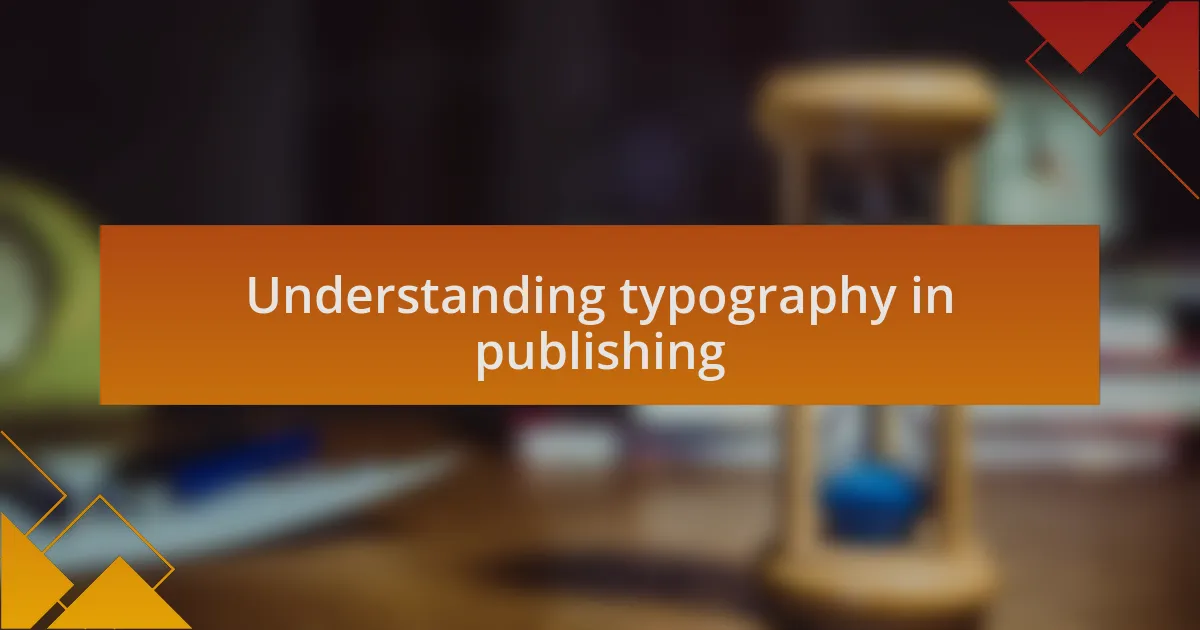
Understanding typography in publishing
Typography is not just about choosing fonts; it’s about creating an emotional connection with the reader. I remember the first time I chose a specific typeface for my own publishing project; it wasn’t just aesthetics—it spoke volumes about the tone and genre. Have you ever picked up a book and felt its character just by glancing at the cover? That power lies in typography.
The right typeface can evoke feelings, while the wrong one can detract from the message entirely. In my experience, when I used a bold serif font for a historical piece, it instantly added a sense of gravity and tradition that readers appreciated. This illustrates how our choices in typography can shape perceptions—what story do you want your type to tell?
When selecting typography for publishing, consider not just readability but also personality. I once experimented with a flowing script font for a poetry collection, and feedback revealed readers felt a deeper connection to the words, as if they were conversing with the poet directly. Isn’t it fascinating how a simple design choice can enhance the narrative experience?
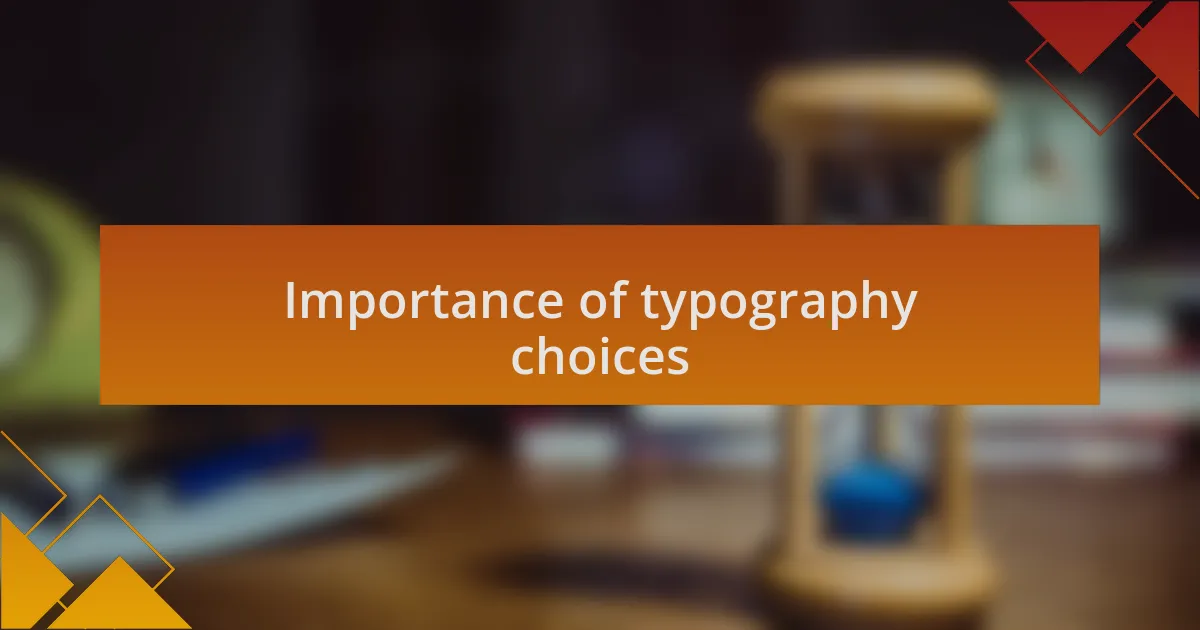
Importance of typography choices
Typography choices play a crucial role in shaping the reader’s experience. I recall a project where I decided to use an elegant sans-serif font for a modern nonfiction piece. The clean lines not only made the text more accessible but also projected a contemporary vibe that resonated with the target audience. It’s amazing how a well-chosen type can instantly convey the essence of the content, isn’t it?
Moreover, the emotional impact of typography shouldn’t be underestimated. While working on a children’s book, I opted for a playful, rounded font, which was well received by both kids and parents alike. It created an inviting atmosphere that encouraged young readers to engage with the story. How often do we overlook such details that can dramatically enhance a reader’s connection with the material?
When considering typography in publishing, I believe it’s essential to think about the overall user experience. During a digital publishing project, I focused on readability across various devices, selecting fonts that maintained clarity and style whether viewed on a smartphone or a tablet. This decision not only improved accessibility but also satisfied my commitment to quality, showcasing how typography truly serves as a bridge between the content and its audience.

Factors influencing typography decisions
When I evaluate typography options, the target audience’s demographics and preferences are always at the forefront of my decision-making process. For instance, I recall a project aimed at young adults where I chose a modern, edgy typeface that resonated well with their preferences for trendy aesthetics. Have you ever noticed how much easier it is to connect with content that feels tailored to you?
Another crucial factor I consider is the medium through which the content will be delivered. Once, during a web project, I experimented with variable fonts that adjusted weight and style based on screen size. This versatility not only enhanced user engagement but also created a seamless experience as users moved between devices. Have you ever had that frustrating moment when a website’s text was just too small to read comfortably? It’s moments like these that remind me of the importance of adaptability in font selection.
Finally, the brand identity plays an influential role in guiding typography choices. I once collaborated with a startup that was all about sustainability and ethics. I selected a typeface with organic characteristics, which harmonized beautifully with their message. Can you see how typography can embody a brand’s essence? It’s fascinating how certain letters and shapes can reinforce a brand’s narrative, ultimately weaving a cohesive story through design.
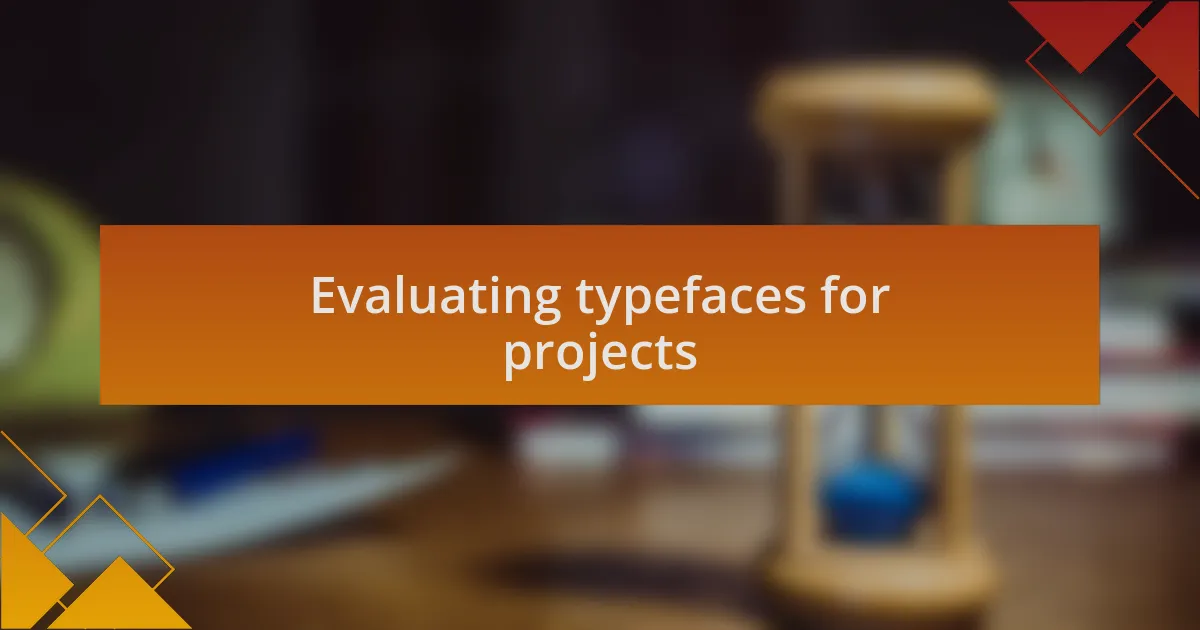
Evaluating typefaces for projects
When I evaluate typefaces for a project, I often think about legibility first and foremost. I remember a project where I had to design a brochure for an elderly audience, and choosing a bold, sans-serif typeface made all the difference. Can you imagine how frustrating it would be for someone to squint at tiny fonts while trying to read important information?
Beyond legibility, I find that the emotional resonance of a typeface is equally vital. During a recent independent publishing venture, I spent hours experimenting with handwritten fonts for a children’s book. The right choice not only captured the playful spirit of the story but also made the text feel warm and inviting. How often do you find yourself drawn to a book simply because of its cover design and typography?
Lastly, I always consider the context in which the typography will be used. I once worked on a digital campaign where we needed a typeface that could evoke nostalgia. By selecting a vintage-style serif, we were able to transport readers to a different era, enhancing their connection with the content. Isn’t it amazing how a simple font can pull at our heartstrings and evoke memories?
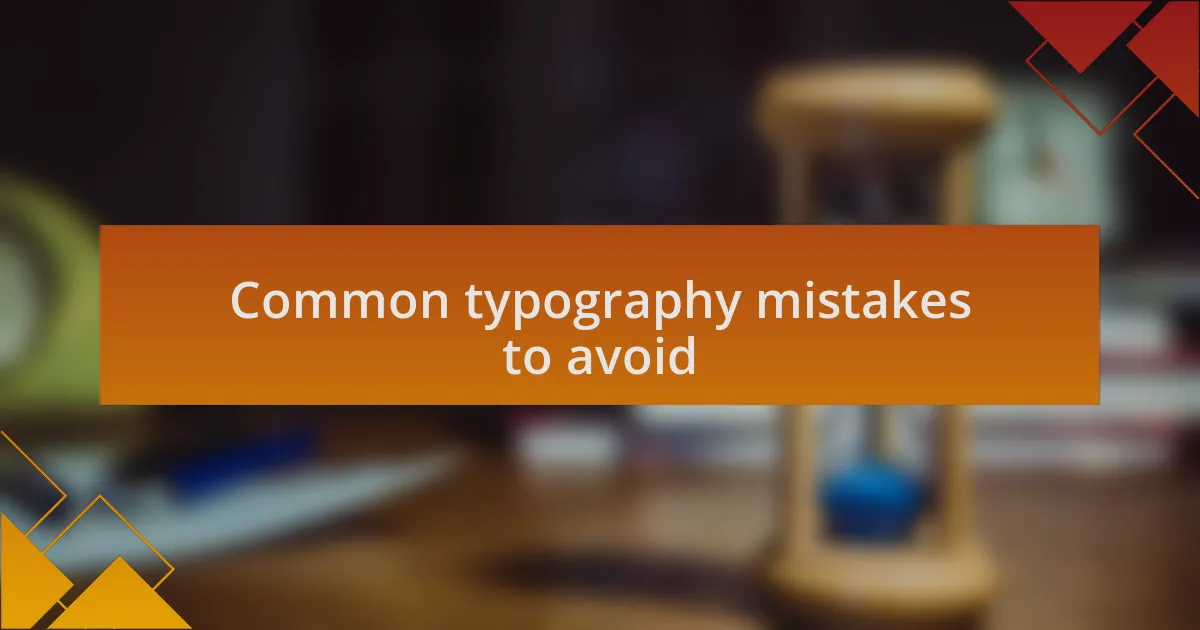
Common typography mistakes to avoid
One common mistake I see frequently is the overuse of different typefaces on a single page. It can create a chaotic visual experience that distracts rather than engages readers. I recall a project where I used three different fonts trying to create variety, but instead, it muddled the message and left readers feeling overwhelmed. Have you ever felt lost in a sea of fonts? It’s a real turn-off.
Another pitfall is neglecting the hierarchy in typography. Establishing a clear visual hierarchy helps guide readers through the content. I once designed a website for an indie author, and by using varying font sizes and weights for headings and body text, we created a path for the reader’s eye. Did you notice how the right hierarchy can enhance comprehension? It’s like giving a roadmap to your audience.
Lastly, choosing colors that clash with your text can seriously hinder readability. I remember a time when I paired a light font with a busy background, thinking it would look aesthetically pleasing. Unfortunately, it was an exercise in frustration for the readers. Have you ever struggled to read something due to poor color choices? It’s crucial to prioritize clarity over style to ensure your typography serves its purpose.
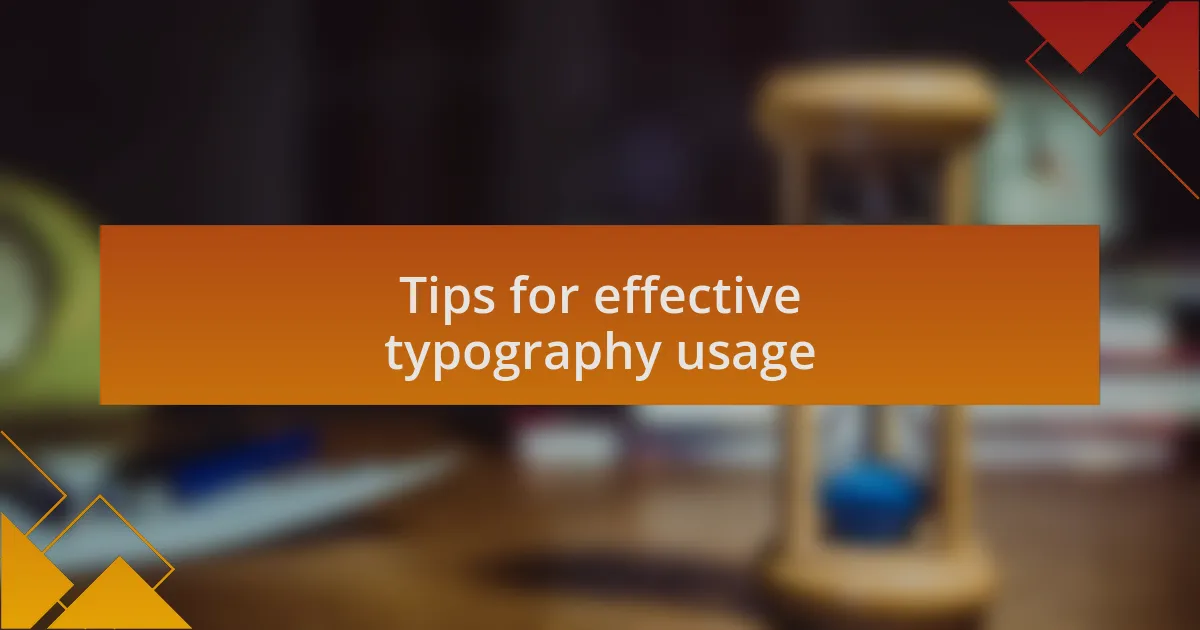
Tips for effective typography usage
When selecting typefaces, I always advocate for limiting choices to two or three that complement each other. During an independent publishing project, I experimented with contrasting a serif font for headings with a sans-serif for body text, and I found it not only enhanced readability but also gave the site a polished, professional look. Have you ever tried balancing elegance with simplicity? It can make a world of difference.
Another vital tip is to ensure consistent spacing between lines and paragraphs. I learned this lesson the hard way when I published an article that felt cramped, leaving readers struggling to stay focused. I realized that adequate white space creates a breathing room that not only makes text easier on the eyes but also fosters an inviting atmosphere. Have you noticed how everything feels more comfortable when there’s space to breathe?
Lastly, it’s important to consider the context in which your typography will be viewed. I remember developing materials for an author event where I had to ensure that the text was clear even from a distance. Choosing the right font size and styling made all the difference in creating an impactful presence on stage. When was the last time you thought about how your typography translates across various platforms? Understanding the environment can elevate your design from ordinary to exceptional.